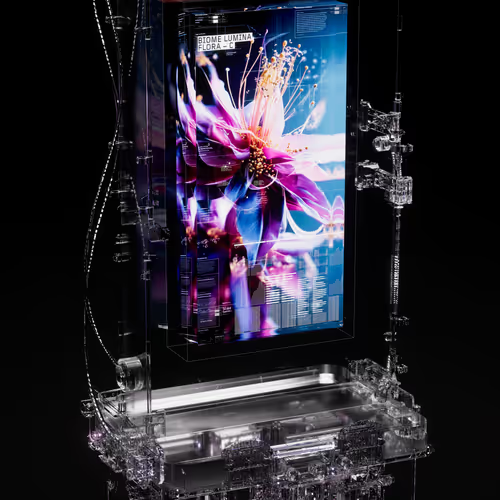Umbralux Symbioticus, named from Latin 'umbra' (shadow) and 'lux' (light), is a rare bioluminescent species of the Luminis Scintillanta cluster, 15-30 cm tall, with slender stems supporting semi-translucent flowers. Each bloom has elongated petals shifting from deep crimson to soft violet with luminescent speckles. Central reproductive structures include greenish-yellow stamens and pistils, surrounded by luminous nectar guides attracting nocturnal pollinators. Leaves are narrow, serrated, matte with faint phosphorescent dots. Bioluminescence peaks at 450-495 nm from photoproteins in glandular trichomes on petals and reproductive parts, producing a blue-green glow in shaded tropical rainforest understory. Prefers 15-25°C, humid, shaded habitats where air movement disperses scent for moths and beetles. U. symbioticus belongs to a genus of five species, all symbiotically bioluminescent, vital for nocturnal pollination and forest biodiversity.
